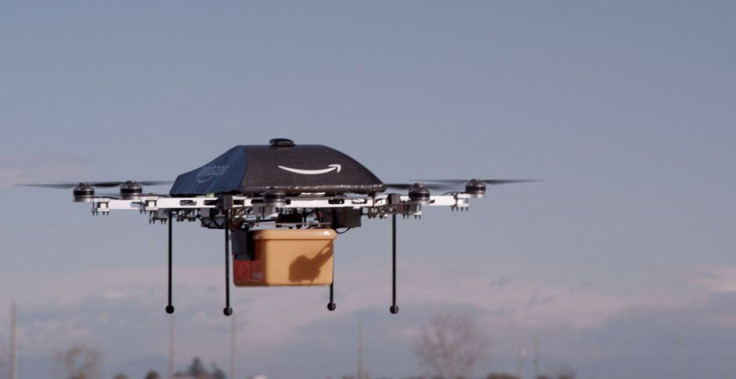Shot Down? New FAA Rules Could Scuttle Amazon, Google Drone Plans

The FAA is reportedly mulling a set of highly restrictive rules for commercial use of drones for package delivery and other purposes. The regulations under consideration would appear to make impractical or impossible delivery-by-drone services currently being tested by tech heavyweights Amazon and Google.
Among other things, the proposed rules would limit commercial drones to a maximum altitude of 400 feet, and require operators maintain line-of-sight contact with unmanned aerial vehicles (UAVs), The Wall Street Journal reported Monday.
Those requirements would appear to shoot down plans by Google, Amazon and several other companies to use drones to deliver packages. Google in August took the wraps off Project Wing, an effort to build drones capable of cross-country delivery. “Self-flying vehicles could open up entirely new approaches to moving things around,” a company spokesperson told WIRED at the time.
Earlier in the year, Amazon confirmed it had asked the Federal Aviation Administration for clearance to test its own drones for a delivery service dubbed Prime Air. The line-of-sight and altitude requirements would seem to rule out widespread use of drones for delivery, particularly in urban and suburban environments.
The FAA’s proposed rules, likely to be released for comment by year’s end, would also require commercial drone operators be licensed pilots and flights be conducted only during the daytime.
Representatives for Amazon and Google did not immediately respond to a request for comment.
An FAA spokesman confirmed the rulemaking process is underway and the administration expects to release a draft of its regulations before the end of the year. “The proposed regulations and standards we expect to be in the rule will make a start toward broader commercial use of unmanned aircraft, but we really can’t give any more specifics,” spokesman Les Dorr told International Business Times. He declined to confirm or deny any of the information in the Journal’s report.
Reports of the new rules come amid growing concern about safety issues posed by drones. Last week, a drone reportedly came within 5- to 10 feet of a Delta Air Lines’ aircraft on approach to New York City’s John F. Kennedy International Airport. It was the latest in a series of incursions by drones into commercial air space. “It’s clear that commercial drone use has crossed over from unregulated to potentially deadly,” said Sen. Charles Schumer, D-N.Y., in a statement Sunday.
Schumer urged the FAA to promulgate new rules concerning drones as quickly as possible.
Absent general regulations, the FAA authorizes commercial drone use on a case-by-case basis. At a minimum, applicants must use an FAA-certified vehicle operated by a licensed pilot or restrict flying to what the administration calls “tightly controlled, low-risk” situations, such as a movie set that’s closed to the public.
The FAA approved the first commercial use of drones in June when it allowed BP PLC to use a Puma AE drone to survey pipelines, roads and equipment in and around Prudhoe Bay, Alaska.
© Copyright IBTimes 2025. All rights reserved.





















